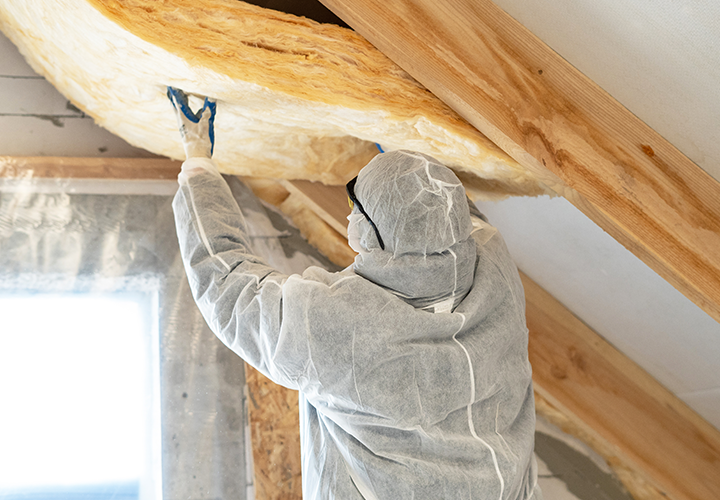Resources & Information
Top 5 Snagging Issues of 2024 and Identify Them in Your Property
In the whirlwind of new homeownership, one essential step that is often overlooked is snagging. Snagging involves identifying and rectifying any defects or issues in a newly built property before you officially move in. As we navigate the housing market in 2024, snagging issues remain a significant concern and, if not addressed promptly, can snowball into larger problems over time.
To help you stay ahead and ensure your home remains in top condition, we've compiled a list of the top 5 snagging issues of 2024, along with tips on how to identify and address them, and how Ignite Property Group can offer services and products to help.
Top 5 Snagging defects to watch out for:
1. Structural Defects
Structural defects can range from minor cracks in walls to more serious issues affecting the integrity of the building. To spot these, carefully inspect both the interior and exterior of the property. Look for cracks, bulges, or uneven surfaces, especially around windows, doors, and where walls meet ceilings or floors. Pay close attention to any signs of dampness or water damage, as these could indicate underlying structural issues.
What to Look For:
- Cracks around windows, doors, or where walls meet ceilings/floors.
- Uneven surfaces or bulges in walls.
- Signs of dampness or water damage.
What to do: If you detect any structural defects, notify your developer or builder immediately. Don't proceed with any further work until the property's structural integrity has been confirmed.
2. Plumbing and Electrical Problems
Faulty plumbing and electrical systems can cause a myriad of headaches down the line. During your own inspection, make sure to test all taps, showers, and toilets to ensure they function correctly and check for any leaks or drips. Similarly, test light switches, sockets, and appliances to identify any electrical issues such as flickering lights or non-functional outlets.
What to Look For:
- Adequate water pressure: A steady stream should flow from all faucets and showerheads.
- Leaks: Look for any drips or trickles under sinks, behind toilets, or around shower fixtures.
- Lights turn on and off smoothly, without flickering.
- Outlets function properly by plugging in a lamp or phone charger. No sparks or buzzing should occur.
- Appliances work as intended (oven heat, fans spin, etc.).
What to do: Document any plumbing or electrical problems you encounter and report them to your developer. Depending on the severity of the issue, they may need to engage qualified plumbers or electricians to carry out repairs or replacements.
3. Finishing Flaws
Even the most meticulously constructed homes can have finishing flaws that detract from their overall appearance. Inspect walls, ceilings, and floors for uneven paintwork, poorly executed plastering, or loose tiles. Don't forget to check the functionality of doors, windows, and cabinetry, ensuring they open, close, and lock smoothly.
What to Look For:
- Paintwork: Check for uneven paint application, streaks, or missed spots.
- Plastering: Look for cracks, bumps, or poorly finished edges.
- Tiling: Ensure tiles are level, secure, and free of chips or cracks.
- Operation: Test if doors and windows open, close, and lock smoothly without sticking or scraping.
- Hardware: Check for loose handles, damaged hinges, or missing screws.
- Sealing: Inspect windows and doors for proper sealing to prevent drafts and leaks.
What to do: Compile a list of finishing flaws and share it with your developer. They should arrange for skilled tradespeople to rectify these issues, ensuring a high-quality finish throughout your home.
4. Insulation and Ventilation
Proper insulation and ventilation are crucial for maintaining a comfortable and energy-efficient living environment. Check for adequate insulation in the walls, floors, and roof space, as well as properly sealed windows and doors to prevent drafts. Additionally, ensure that ventilation systems are functioning correctly, particularly in kitchens and bathrooms where moisture build-up can lead to mould and dampness.
What to Look For:
- Limited access areas: While a full professional snagging inspection is recommended, you can visually check for signs of missing insulation in attics (exposed roof rafters) or crawl spaces (exposed floor joists).
- Draft detection: On a windy day, feel around windows, doors, and electrical outlets for drafts indicating potential air leaks.
- Extractor Fans: Test extractor fans in kitchens and bathrooms to ensure they function properly and remove moisture effectively.
- Airflow: On a calm day, open all windows and doors. Check for even air circulation throughout the house, especially in larger rooms.
What to do: If you notice any deficiencies in insulation or ventilation, notify your developer promptly. They should take steps to address these issues, which may involve installing additional insulation or improving ventilation systems as necessary. At Ignite Property Group, we specialise in insulation surveys and can even provide a thermal imaging survey to help you find where you may be losing heat.
5. Exterior Defects
While it's easy to focus on the interior of your new home, don't overlook the exterior. Inspect the roof for missing or damaged tiles, check the condition of gutters and downspouts, and examine the facade for cracks or signs of water penetration. Additionally, assess the condition of any driveways, pathways, or landscaping features included with the property.
What to Look For:
- Missing or damaged tiles: Look for any broken, cracked, or loose tiles that could allow water infiltration.
- Ridge tiles and flashing: Inspect the condition of ridge tiles (capping the roof peak) and flashing (sealing around chimneys, vents, etc.) for any signs of damage or improper installation.
- Cracks and Damage: Inspect the exterior walls for cracks, especially around windows, doors, and building corners. Look for signs of water damage, such as peeling paint, damp patches, or mould growth.
- Driveway and Pathways: For driveways and pathways, check for uneven surfaces, cracks, or loose paving stones.
What to do: Inform your developer of any exterior defects you identify so they can arrange for appropriate repairs or maintenance. It's essential to address these issues promptly to prevent further damage to your home's exterior.
Professional Snagging Services in New Builds
Although some snagging issues can be found easily by the property owner, it is always worth investing in a professional snagging survey within a new build. If you think there are issues with your new home or have concerns with it, a professional snagging inspection will help to put your mind at ease if nothing is found or will give you the detailed information to take back to the building company.
Snagging your new build property is a vital step in ensuring that it meets the highest standards of quality and craftsmanship. You can identify and address any issues before they escalate into major problems. Remember, communication is key – don't hesitate to raise concerns with your developer and work together to resolve any snagging issues promptly. Your dream home deserves nothing less than perfection.
Looking for a snagging survey? Book your professional survey today with Ignite Property Group.
Related
DIY Vs Professional Services: Choosing Insulation for Your Home
Explore DIY vs. professional services for insulation in your home, to enhance home comfort and energy efficiency this season.
Read MoreA Guide for Homeowners: Smart Homes and Snagging Surveys
Unlock your smart home with a comprehensive snagging survey from Ignite Property Group, for worry-free homeownership.
Read MoreThermal Imaging: Unlocking the Secrets to an Energy Efficient Home
Unfortunately, no home is exempt from poor insulation and that’s why we offer comprehensive thermal imaging surveys to help homeowners increase energy efficiency.
Read MoreThe Great British Insulation Scheme (GBIS): Empowering Households for Lower Energy Bills
Ignite Property Group leads the way with the Great British Insulation Scheme (GBIS), aimed at boosting energy efficiency in homes across Great Britain.
Read More


